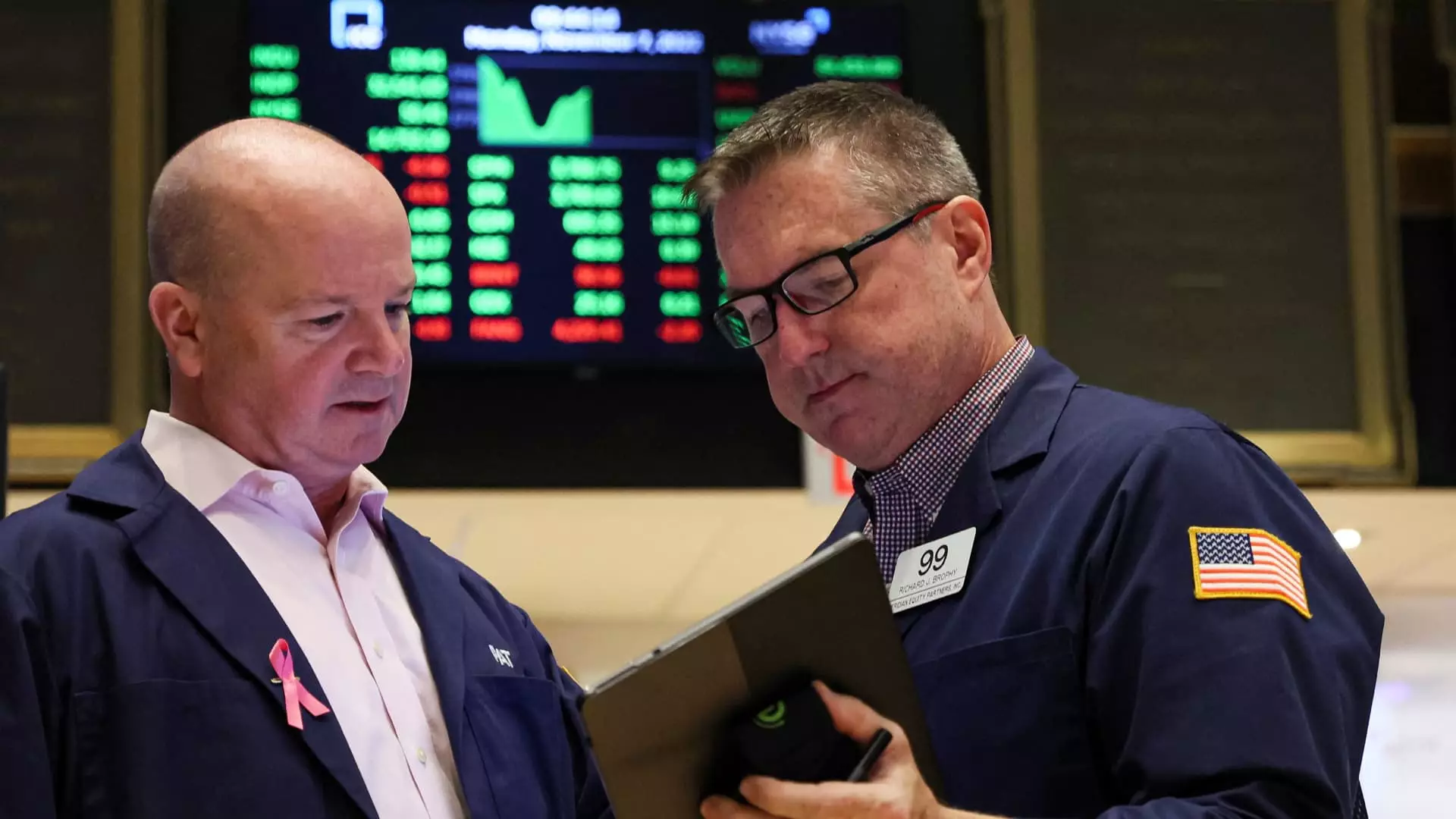Recent developments in the stock market have caught the attention of investors and analysts alike, as the Dow Jones Industrial Average, the S&P 500, and the Russell 2000 indices reached unprecedented levels. On a notable Monday, which saw these major indices soar to new records, the rally was attributed to a mix of investor optimism spurred by political appointments and economic forecasts. The sharp rise in stock values, with the Dow jumping by 407 points and the S&P 500 advancing modestly by 0.2%, not only illustrated the market’s eagerness but also highlighted investors’ increasing confidence in the government’s economic direction.
A pivotal moment came with President-elect Donald Trump’s nomination of Scott Bessent, the founder of Key Square Group, as Treasury secretary. This choice was received enthusiastically by investors, who interpreted it as a signal that the new administration might navigate the economic waters without triggering heightened inflation. As a prominent hedge fund manager, Bessent is perceived as a stabilizing figure capable of fostering a favorable environment for equities, thus leading to the broad advances seen across major indices. His past comments, advocating for a gradual implementation of tariffs, resonated with investors unsure of how Trump’s more aggressive protectionist measures would impact the economy.
The day’s trading painted a balanced picture of market sentiment. Almost 80% of the S&P 500 stocks reported gains, reflecting a collective bullish attitude among investors. Analysts have referred to the market’s response as “textbook,” implying that the surge corresponds with traditional interpretations of positive economic indicators and prospective leadership. Quincy Krosby, a notable market strategist, aptly summarized this enthusiasm by stating, “This is the market applauding,” suggesting that the favorable response was not just a fleeting reaction but indicative of longer-term confidence.
However, while some stocks thrived, large technology companies exhibited a more mixed performance. While industry giants like Amazon and Alphabet advanced, others like Nvidia and Netflix faltered. This disparity reinforces the notion that although the market is optimistic about broad economic policies, individual sectors and companies may not uniformly benefit from these changes.
In the broader context, the markets are also adjusting to fluctuating Treasury yields and a retrenching U.S. dollar index, which fell following the Bessent nomination. The notable drop of over 14 basis points in the 10-year Treasury yield further illustrated investor behavior characterized by a cautious optimism. Amid a shortened trading week due to the Thanksgiving holiday, market participants are bracing themselves for potential fluctuations driven by key economic indicators. Notably, the Personal Consumption Expenditures (PCE) price index—considered the Federal Reserve’s preferred measure for inflation—is set to be released soon, which could signal future monetary policy adjustments.
As the year draws to a close, it remains crucial for investors to keep an eye on prevailing economic trends as well as the unfolding political landscape. As Thanksgiving approaches, trading volume is expected to dwindle, which could result in heightened volatility. The implications of upcoming economic data, especially regarding inflationary pressures, will undoubtedly shape market dynamics in the weeks to come. Thus, while recent rallies have indicated a renewed bullish sentiment, the market’s next steps will hinge on a combination of insightful leadership, economic indicators, and investor sentiment that continually adapts to changing conditions.
The recent euphoric rally in U.S. equities signifies a significant momentum shift, driven by leadership appointments and market expectations surrounding economic policy. The subsequent fluctuations and sector-specific responses remind investors of the complexities inherent in navigating post-election market phases, as they weigh both immediate reactions against longer-term strategic implications.


Leave a Reply